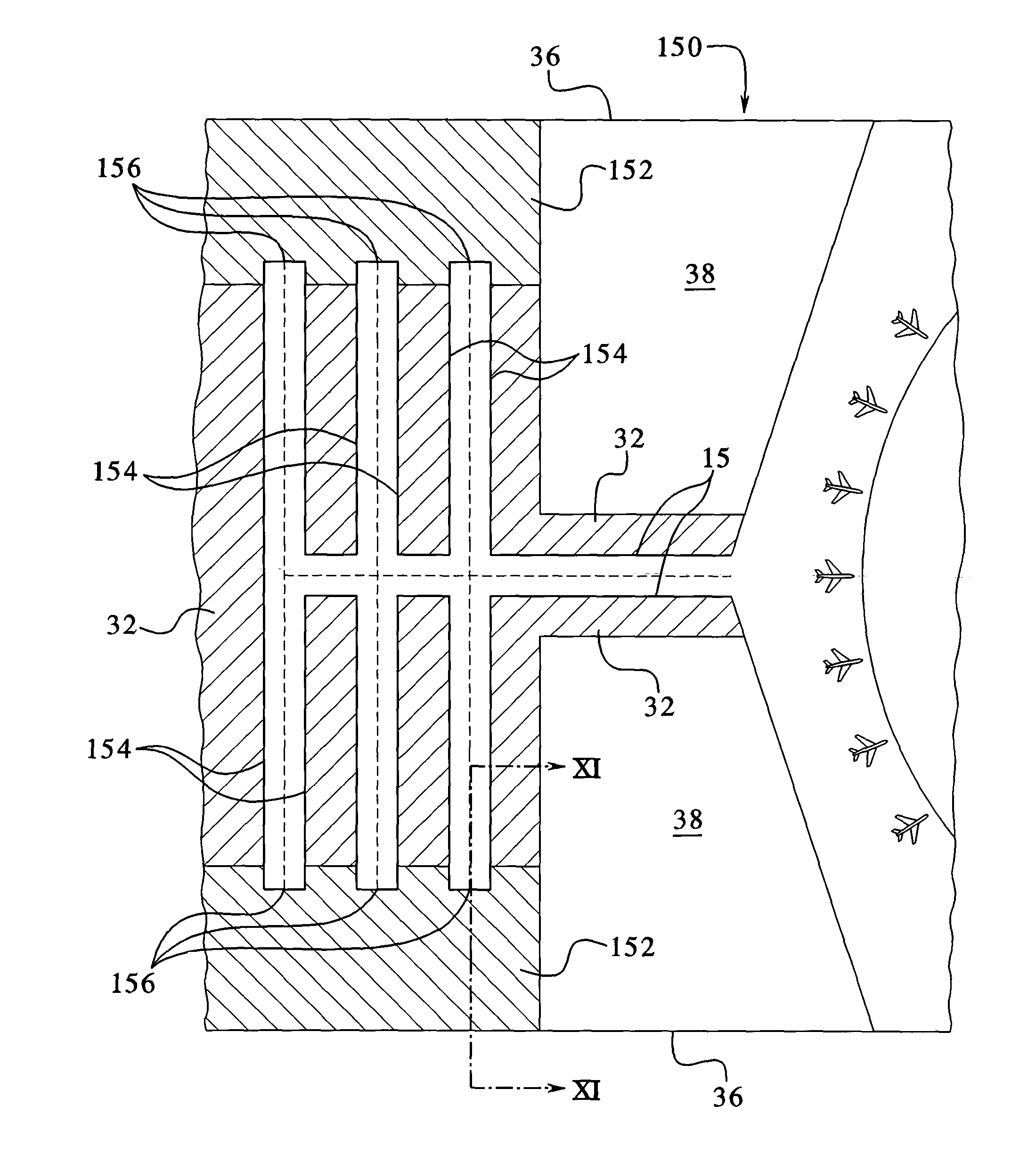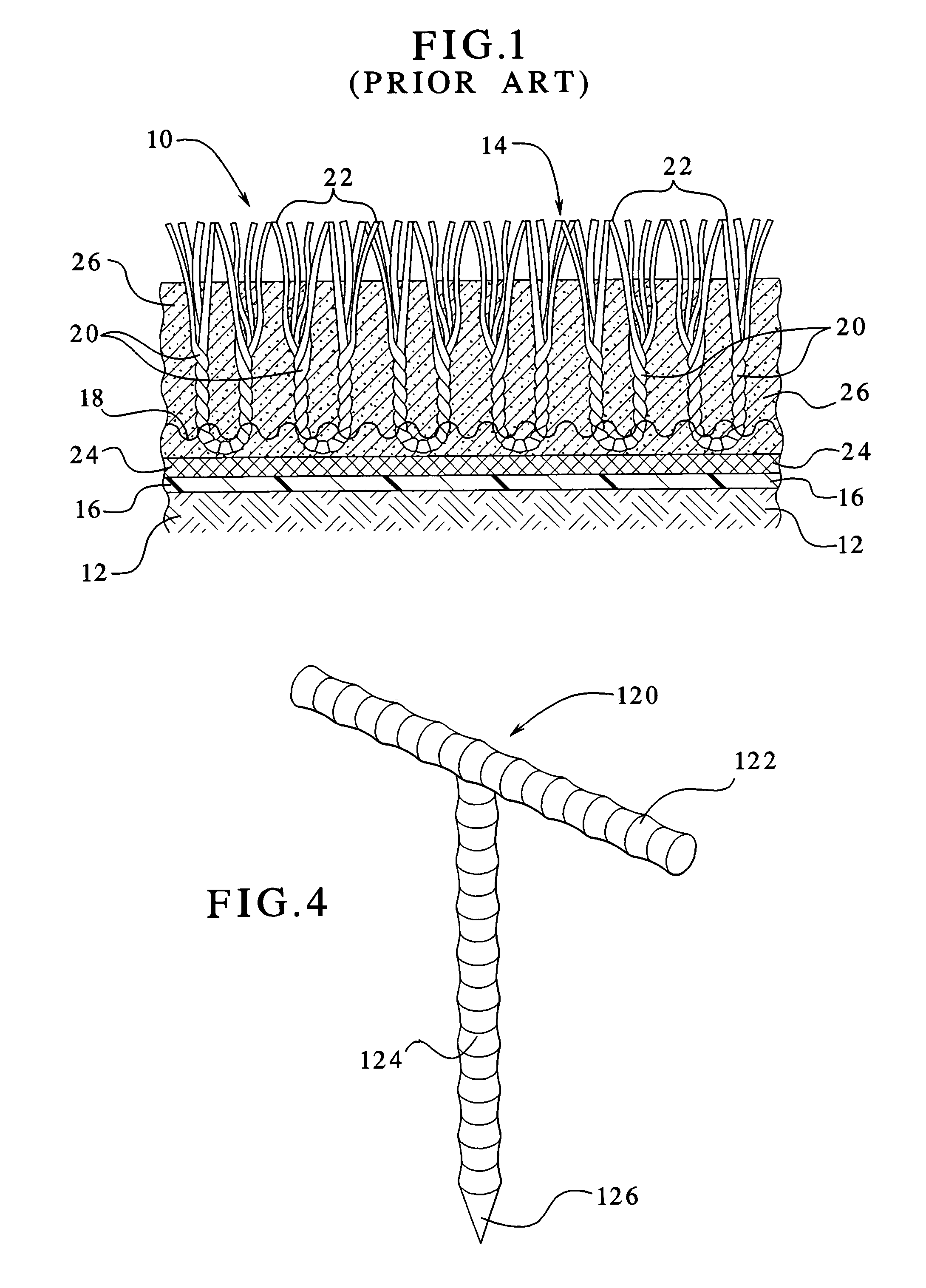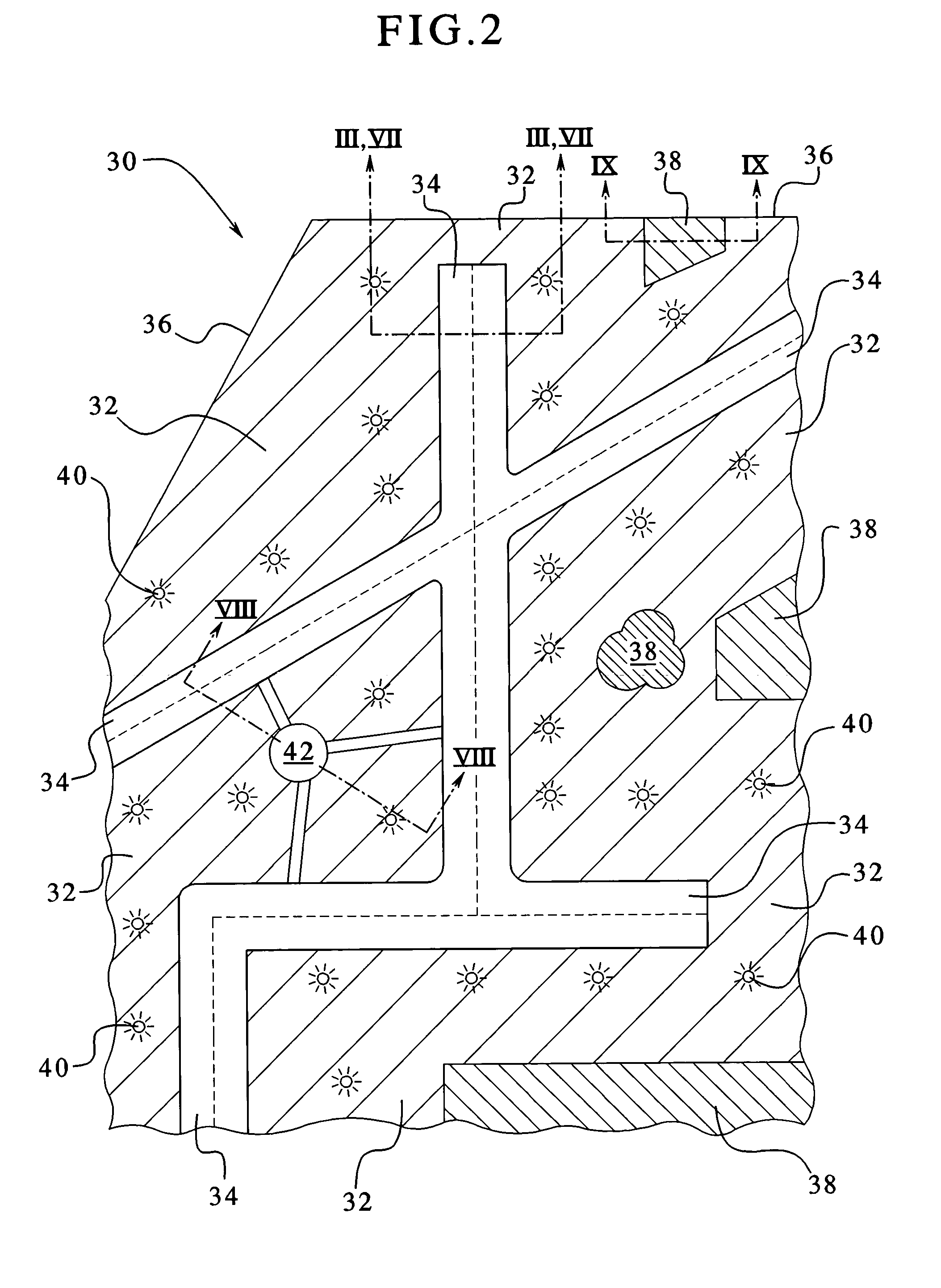Method of operating a safety system for airports and airfields
a safety system and airport technology, applied in landing aids, instruments, roads, etc., can solve the problems of the greatest potential danger of aircraft, achieve the effect of reducing the risk of aircraft collision, improving the safety of airport vehicles, and slowing down the movement of aircra
- Summary
- Abstract
- Description
- Claims
- Application Information
AI Technical Summary
Benefits of technology
Problems solved by technology
Method used
Image
Examples
embodiment 140
[0112]The interface embodiment 140 includes digging a trench 144 into the existing soil 58 along a desired interface line of the airfield. The trench 144 is preferably sufficiently deep to secure a piece of vertical turf 146 that is folded over the base material 70 and backfilled with compacted soil 148. A one foot (30 cm) deep by four inch (10 cm) wide trench is generally sufficient. Well known trenchers can dig thousands of feet of this trench in an hour. The system implementor then plants natural grass sod 142 or seed, depending on the proximity of the interface to the runway or taxiway (sod too close to the runway can fly up and become a FOD, however, a turf / grass interface is preferably at least 150 feet (45 m) from the runway or taxiway).
[0113]Referring now to FIG. 10, a top plan sectional view of an airport or airfield 150, including sections of airport runways, taxiways and areas 152 of adjacent synthetic turf employing a soft ground arrester system of the...
embodiment 170
[0131]Referring now to FIG. 12, a front elevation sectional view through an embodiment 170 of artificial or synthetic turf is illustrated, wherein a plurality of the grass-like fibers 90 are replaced by stiff, spiny, barbed, needle bearing or prickly fibers or any combination thereof which are referred to herein as repelling fibers 172, and which repel loitering animals. The repelling turf 170 is preferably laid over a sheet 84. As discussed above in the flow-through embodiment of FIG. 3, the sheet 84 is a weed barrier. In a sheeting embodiment discussed in FIG. 7, the sheet 84 preferably includes a waterproof membrane. A 12 or 15 foot (3.6 or 4.5 m) roll of the repelling turf 170 preferably includes a primary flexible backing 86, e.g., of double woven polypropylene and a secondary flexible backing 88, e.g., which is preferably polyurethane. The backings are alternatively any known primary or secondary backing, some of which are disclosed above in connection with FIG. 1. The thickne...
PUM
 Login to View More
Login to View More Abstract
Description
Claims
Application Information
 Login to View More
Login to View More - R&D
- Intellectual Property
- Life Sciences
- Materials
- Tech Scout
- Unparalleled Data Quality
- Higher Quality Content
- 60% Fewer Hallucinations
Browse by: Latest US Patents, China's latest patents, Technical Efficacy Thesaurus, Application Domain, Technology Topic, Popular Technical Reports.
© 2025 PatSnap. All rights reserved.Legal|Privacy policy|Modern Slavery Act Transparency Statement|Sitemap|About US| Contact US: help@patsnap.com



